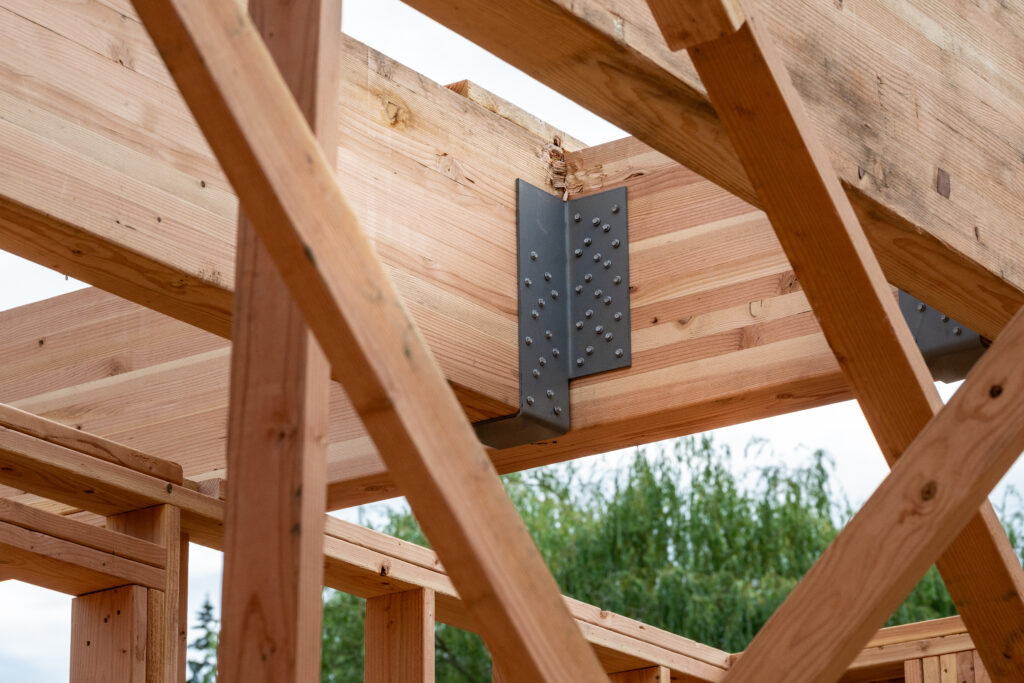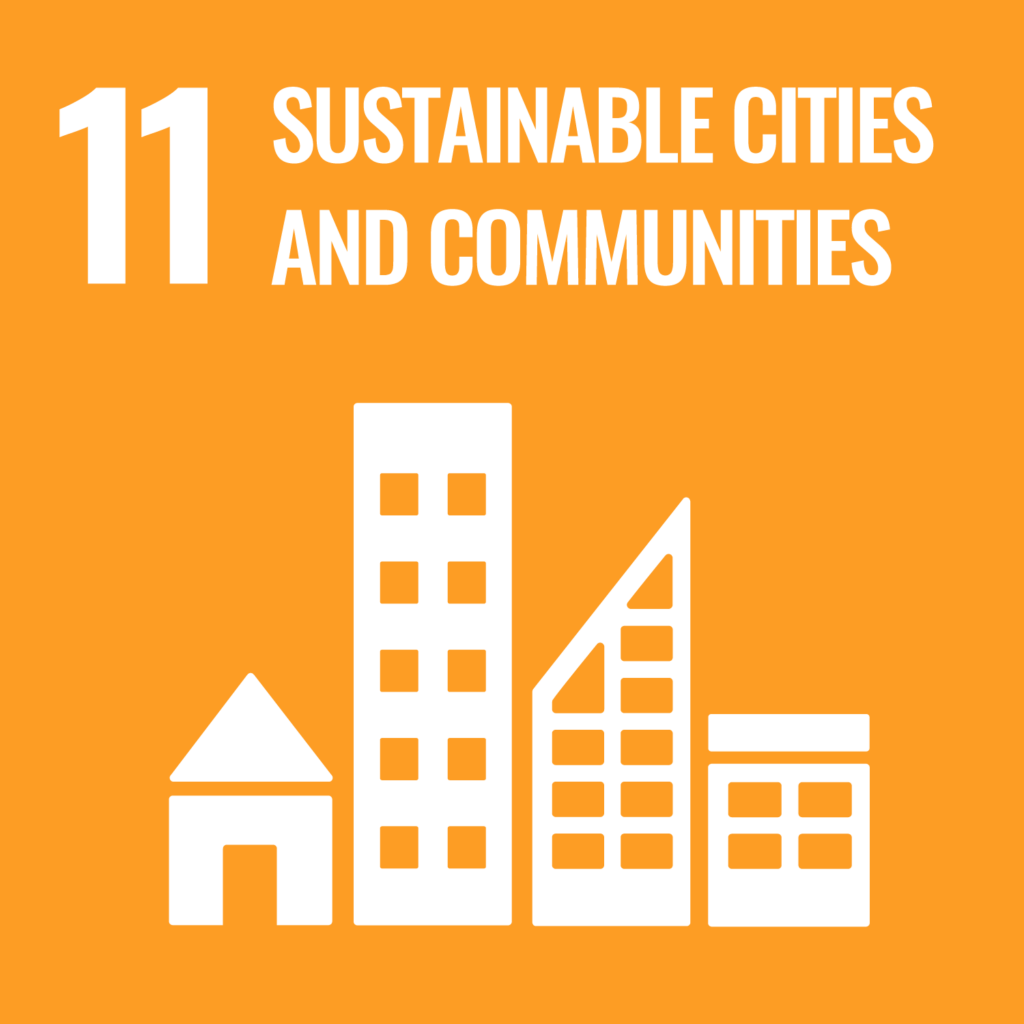This project uses engineered glulam timber elements in large-scale commercial and residential buildings across Norway. Each element locks in atmospheric carbon absorbed during tree growth, turning the construction sector from a major emitter into a climate solution.
Timber used in the glulam beams is sourced from sustainably managed, PEFC-certified Norwegian and Swedish forests. During production, each cubic metre of glulam stores 541 kg of CO₂. In contrast to traditional building materials like concrete or steel, which emit over 300 kg CO₂ per cubic metre, this glulam acts as a long-term carbon sink while also replacing high-emission construction components. Buildings incorporating these products are designed to last over 50 years—many much longer—ensuring that the carbon remains locked away for decades.
Puro.earth #350917
Registered
Moelv, Norway

CORCs – Bio-based Construction Materials
541 kg CO₂e per cubic metre of glulam produced

Ongoing (first issuance in 2019)
Decarbonisation of the building sector, support for sustainable forestry, enhanced building performance and health
The project has a strong commitment to environmental and sustainable development that benefit local communities through the following contributions:
Environment
Each cubic metre of glulam locks in 541 kg of CO₂ through the growth and harvest of local trees. The project contributes to significant avoided emissions by replacing concrete and steel in buildings, although these avoided emissions are not claimed under the Puro methodology. Sustainable forest management ensures two trees are planted for every one harvested, enhancing forest health and CO₂ uptake.
Community
The project supports regional economic development in Moelv and surrounding rural areas through sustainable timber harvesting, forest stewardship, and construction supply. Additionally, wooden buildings provide better indoor air quality and thermal comfort for occupants, improving human health and wellbeing.
Employment and Industry
This project facilities employ local workers and support the Scandinavian timber industry in its transition to modern low-emission construction. The carbon finance from CORCs enables this material to remain competitive against steel and concrete suppliers, while accelerating plans for further electrification and operational efficiency investments.
Innovation and Impact
The project’s creators were behind the construction of Mjøsa Tower—the world’s tallest timber building—demonstrating the potential of climate-positive architecture. The project shows how established manufacturers can shift from legacy products to net-negative solutions at scale, driving a broader industry transition.
The project is verified by DNV GL and registered under the Puro Standard for bio-based construction materials. All emissions related to harvesting, processing, and delivery are transparently accounted for in third-party audited LCAs and Environmental Product Declarations.



GOAL 11 – Sustainable Cities and Communities

GOAL 13 – Climate Action
One Tribe enables businesses to be more sustainable by funding rainforest protection projects that store carbon from being released into the atmosphere. By enabling customers to protect rainforest when they shop online we also empowers consumers to drive positive change
One Tribe is a Climate Action Platform enabling businesses and their customers to make a positive environmental impact.



Eric currently works as an independent consultant at the intersection of nature and climate, focused on catalysing market and non-market solutions to drive the just transition.
He previously was Head of Product at Earthshot Labs, supporting nature conservation and restoration projects across the global south secure project finance. Prior to Earthshot Labs, Eric led nature-based carbon project development for Gorongosa National Park in Mozambique and founded the Carbon Cooperative, a global alliance of leading nature conservation and restoration practitioners exploring carbon finance. After serving in the Peace Corps in Mozambique out of university, he spent much of his 20s working in community-based conservation and ecosystem restoration efforts in Sub-Saharan Africa interspersed with two startup ventures as co-founder and CEO of a mental health tech startup and COO of a sustainable coffee company. Eric has a dual Masters in Environmental Engineering and Environmental Policy from Stanford University where he was a NSF Graduate Research Fellow and a BS in Environmental Engineering from Tufts University.
Alan is a risk management thought-leader, superconnector, and FinTech pioneer. His mission is to enable an Earth Positive economy which includes nature in global accounting systems.
Alan is Founder of Generation Blue, a venture studio dedicated to planetary game changers powered by exponential technologies. Previously, Alan established Natural Capital Markets at Lykke AG, pioneering blockchain based forestry and carbon backed tokens. Alan has over two decades of risk management experience advising global financial institutions, and was a founding member of the RiskMetrics Group, a JPMorgan spin-off. Alan is an investor and advisor to regenerative impact ventures, including TreeBuddy.Earth, Regenativ, and Vlinder Climate.
Lori Whitecalf made history when she became the first woman to be elected Chief of Sweetgrass First Nation in 2011. She served three terms of office from 2011-2017.
Lori took a two-year hiatus from leadership to expand the family ranch and serve as the FSIN Senior Industry Liaison. She was re-elected on November 29. 2019 and again on November 30, 2021, as Chief of Sweetgrass. Chief Whitecalf practises a traditional lifestyle of hunting, fishing and gathering. She currently sits on the following boards: Saskatchewan Indian Institute of Technology, FSIN Lands and Resource Commission, Battle River Treaty 6 Health Centre and Battleford Agency Tribal Chiefs Executive Council, FSIN Women’s Commission.
Tina is the Chief Business Officer for MLTC Industrial Investments, the Economic Development arm of the Meadow Lake Tribal Council. She has a diverse background of experience. Having spent 15 years as a municipal Chief Operating Officer, 20 years involved in Saskatchewan’s Health Authority Board Keewatin Yatthe and 9 years with Northern Lights Board of Education.
She continues as a Board Member with Beaver River Community Futures supporting small business development in her home region. Tina brings a wealth of experience in a variety of fields and many connections to the Indigenous communities of Northern Saskatchewan. In addition Tina holds a BA Advanced from the U of S, a Certificate in Local Government Authority from the U of R and is certified as a Professional Economic Developer for Saskatchewan and a certified Technician Aboriginal Economic Developer (TAED).
Tootoosis’ career spans 40+ years in HRM, political leadership, and Indigenous economic development, as a dedicated bridge builder and advocate for Indigenous causes.
As a key member of the Saskatoon Regional Economic Development Authority (SREDA) team since 2021, he develops strategies for the Truth and Reconciliation Commission final report and Call to Action #92.
He is a graduate of the First Nations University of Canada and a certified Professional Aboriginal Economic Developer. Spearheading various community initiatives while serving as a Chair of the SIEDN while directing ILDII and WIBF. Founder of MGT Consulting Tootoosis is based in Saskatoon, Treaty Six Territory.
Cy Standing (Wakanya Najin in Dakota) has a long and distinguished career including serving overseas as an Electronics Technician in the Royal Canadian Air Force, former Chief of Wahpeton Dakota Nation, former Vice Chief of the Federation of Saskatchewan Indigenous Nations (FSIN), past Executive Director of Community Development Branch of the Department of Northern Saskatchewan as well as an Order in Council appointment to the Federal Parole Board.
Mr. Standing has served as a Director on many Profit and Non-Profit Corporate Boards, including serving as a Director for Affinity Credit Union with assets of over six billion dollars as well as IMI Brokerage and Wanuskewin and is currently a member of the One Tribe Indigenous Carbon Board.